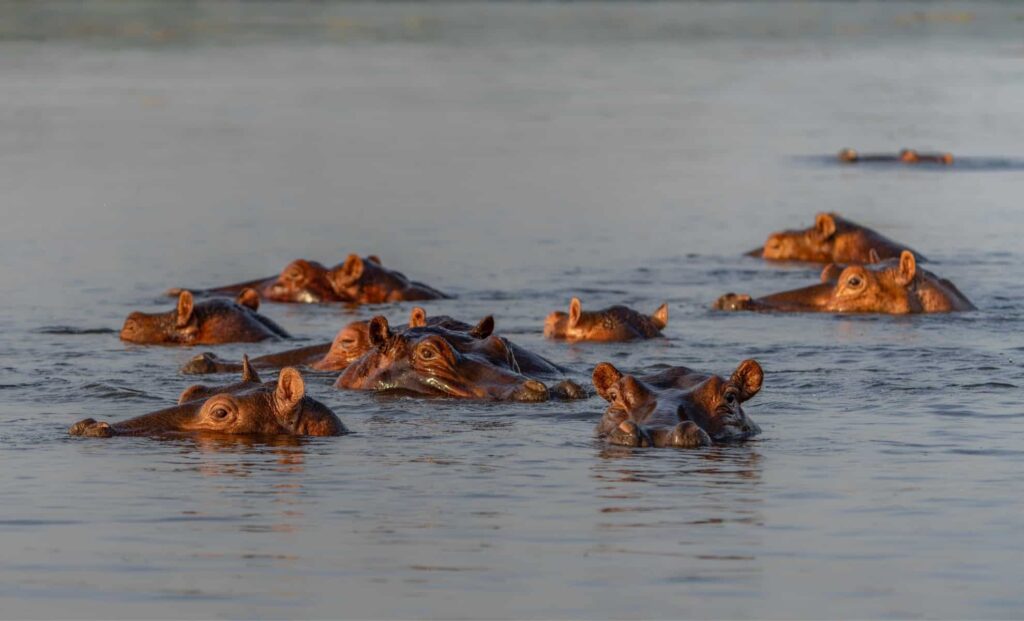Recent research led by a collaboration between the University of Potsdam, Reiss-Engelhorn-Museen Mannheim, and the Curt-Engelhorn-Zentrum Archäometrie has uncovered remains of hippopotamuses in the Upper Rhine Graben, Germany.
DNA analysis and radiocarbon dating of ancient bones confirm that these animals lived between 47,000 and 31,000 years ago—far later than previously assumed. This region, though situated in the heart of glacial Europe, appears to have hosted brief warm phases where rivers flowed and vegetation returned.
The findings indicate that Ice Age Europe was far from uniformly frozen. Rather, it was a patchwork of shifting climates, where pockets of land remained hospitable even during colder periods. This environmental variety allowed some species typically associated with warmer ecosystems to persist, albeit temporarily.
DNA Confirms Late Survival and Isolation
Researchers extracted ancient DNA from well-preserved bones found in layers of gravel and sand. The genetic material closely matched the Hippopotamus amphibius species still found in Africa today. While the DNA confirmed the species’ identity, it also revealed signs of reduced genetic diversity, a clue that these European hippos lived in small, isolated populations.
According to Dr. Ronny Friedrich of the Curt-Engelhorn-Zentrum Archäometrie, “it’s amazing how well the bones have been preserved.” His team used isotope analysis to further reconstruct the environmental conditions. The data suggest that these hippos lived in open river systems surrounded by grasslands and moderate climates—conditions that would only have existed during short interglacial intervals.
The bones were dated to a specific warm period in the Weichselian glaciation, an era when Europe was otherwise dominated by glaciers and tundra. In these temporary sanctuaries, warm-loving and cold-adapted animals coexisted, as shown by the presence of both hippos and woolly mammals in the same sediment layers.

Fossil Records Misdated for Decades
The study calls into question previous assumptions about the disappearance of hippos from Europe. Scientists had long believed the species vanished around 115,000 years ago, when the last major interglacial period ended. The new evidence, however, points to a different timeline and urges a re-evaluation of fossil records across the continent.
As reported by Earth, Dr. Patrick Arnold, a co-author of the study, noted that “hippos did not vanish from middle Europe at the end of the last interglacial, as previously assumed.” His statement emphasizes the need to revisit classification and dating of similar fossils found elsewhere in Europe. Misidentification or outdated methods may have led to underestimations of the hippos’ survival timeline.
Professor Wilfried Rosendahl, who heads the “Eiszeitfenster Oberrheingraben” project, explained that the study offers a new lens on climate complexity in prehistoric Europe. According to Rosendahl, the Ice Age landscape resembled “a puzzle” of local microclimates, each shaping its own ecological history.


Climate Fluctuations Shaped Hippo Persistence
The ability of hippos to persist through cold periods depended entirely on the occurrence of brief warm phases. During these interludes, environmental conditions became favorable: rivers thawed, vegetation re-emerged, and herbivores could feed and reproduce. When the cold returned, they either migrated or perished, leaving their bones as a silent testament to these fluctuations.
Researchers believe that these temporary windows of survival were not unique to hippos. Other warm-climate animals—such as lions, elephants, and giant deer—may also have taken advantage of similar refuges in the changing Ice Age landscape.
Funded by the Klaus Tschira Stiftung Heidelberg, the “Eiszeitfenster Oberrheingraben” project continues to study over 400,000 years of faunal history stored in the collections of the Reiss-Engelhorn-Museen. This initiative is helping piece together a more nuanced view of how ancient species responded to environmental instability—less a tale of total extinction, and more one of adaptation, movement, and brief returns.

